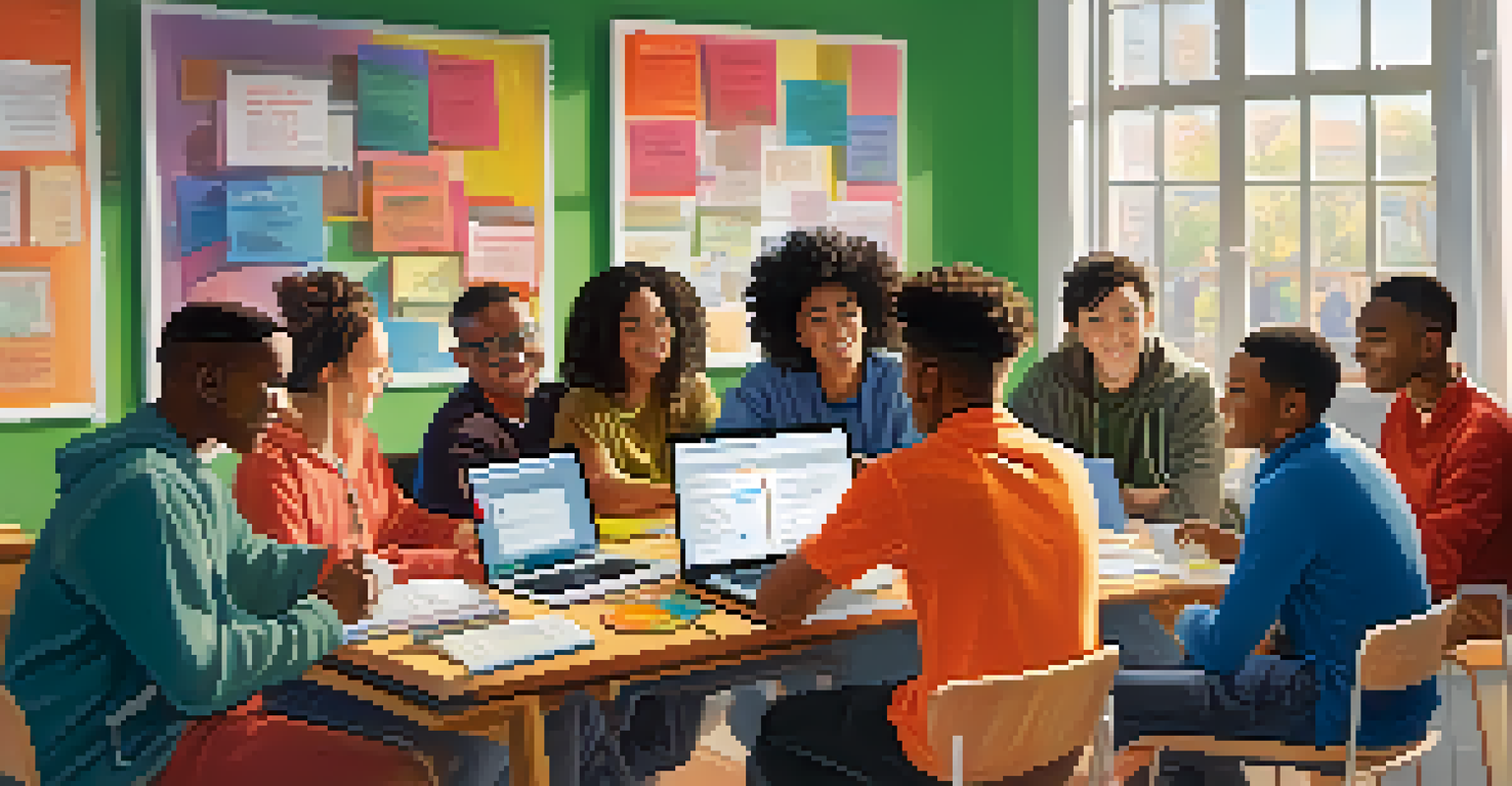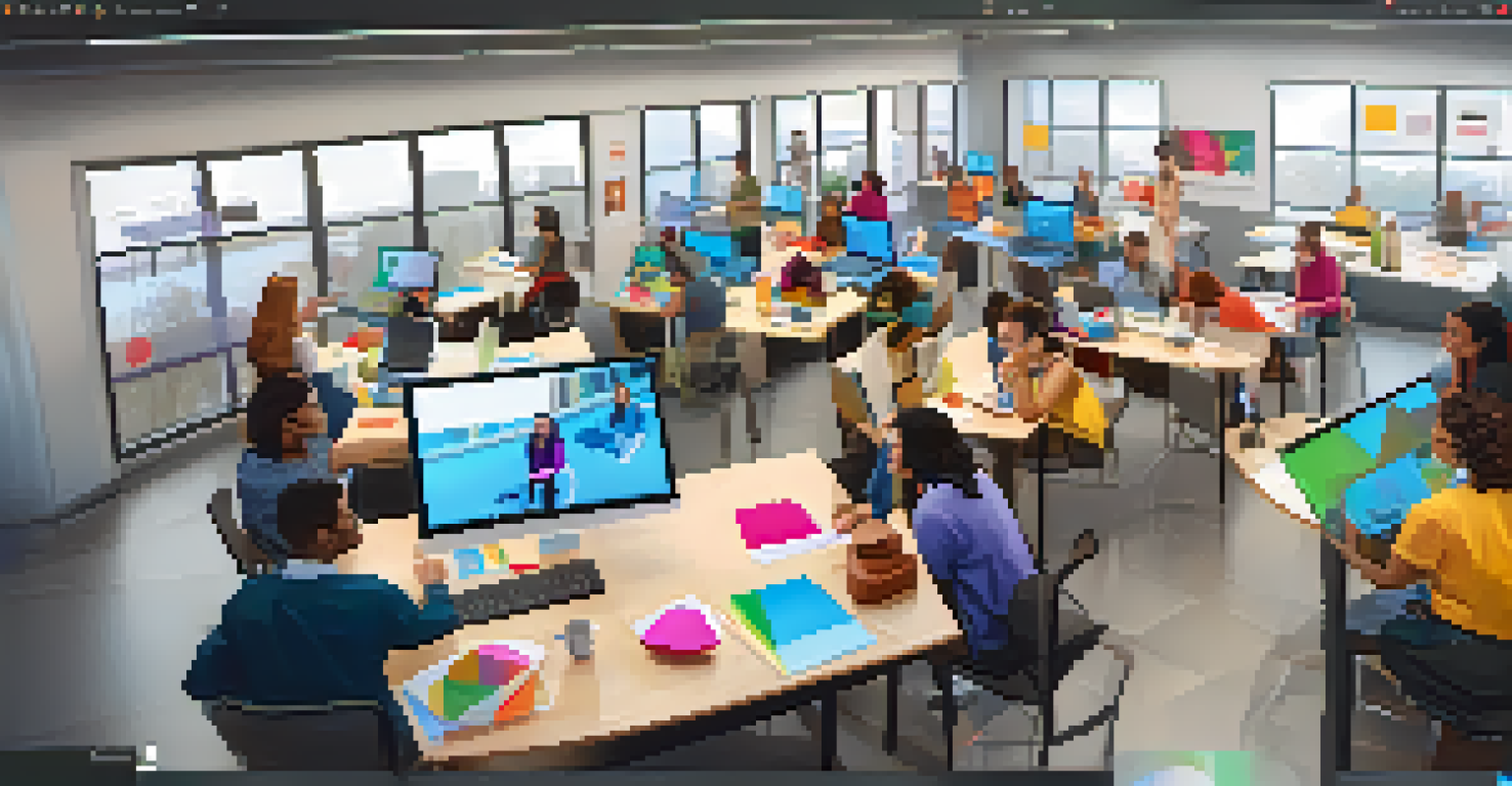The Role of Community in Microlearning Success

Understanding Microlearning: A Quick Overview
Microlearning is an educational approach that delivers content in small, focused segments. Think of it like snacking on bite-sized pieces of information instead of a full-course meal. This method caters to our shorter attention spans and busy lifestyles, making learning more accessible.
Tell me and I forget. Teach me and I remember. Involve me and I learn.
The beauty of microlearning lies in its flexibility; learners can engage with content whenever and wherever they want. This format is especially beneficial in today's fast-paced world, where time is a luxury. By breaking down complex topics into manageable segments, learners can absorb information more effectively.
However, while microlearning is effective on its own, it becomes even more powerful when paired with community support. This brings us to the essential role that community plays in enhancing the microlearning experience.
The Power of Community in Learning Environments
Community creates a sense of belonging, which is crucial for effective learning. When learners feel connected to others, they're more likely to engage and participate actively in their learning journeys. This engagement can lead to deeper understanding and retention of the material.

Furthermore, a community encourages collaboration and knowledge sharing. Learners can discuss insights, ask questions, and offer different perspectives, which enrich the overall learning experience. It’s like a potluck dinner where everyone brings their favorite dish, making the meal much more diverse and enjoyable.
Microlearning Enhances Learning Flexibility
Microlearning delivers content in bite-sized segments, making it easier for learners to engage with information at their own pace.
The support system that a community provides can also motivate individuals to stay committed to their learning goals. When you're part of a group, there's a sense of accountability that encourages you to keep pushing forward.
Facilitating Peer-to-Peer Learning Opportunities
In a community, learners can teach and learn from one another, creating a dynamic exchange of knowledge. This peer-to-peer learning can reinforce concepts in a way that traditional teaching methods may not achieve. It's similar to learning to ride a bike; having a friend alongside you can make the process less daunting.
Alone we can do so little; together we can do so much.
These interactions can happen through discussion forums, study groups, or even casual meet-ups. When learners share their experiences and insights, they help each other navigate challenges and celebrate successes. This camaraderie can make the learning process more enjoyable and effective.
Moreover, such environments foster diverse viewpoints, which can lead to innovative solutions and creative thinking. Together, learners can tackle problems that may seem insurmountable alone.
Creating a Safe Space for Risk-Taking
A strong community allows learners to feel safe in taking risks and making mistakes. When individuals know they won't be judged harshly, they're more likely to experiment with new ideas and approaches. This mindset is essential in learning, as mistakes often provide the best lessons.
In a supportive community, learners can share their failures and seek advice without fear of embarrassment. This openness encourages growth and resilience, important qualities for anyone looking to master new skills. It’s akin to a sports team where players learn from their losses together.
Community Boosts Learning Engagement
A strong community fosters belonging and collaboration, leading to deeper understanding and retention of knowledge.
Ultimately, fostering a safe space leads to greater innovation and creativity, as learners feel empowered to think outside the box and explore new possibilities.
Utilizing Technology to Enhance Community Connections
Technology plays a pivotal role in building and maintaining community in the realm of microlearning. Online platforms and social media can bring learners together, regardless of geographical barriers. This connectivity allows for real-time discussions and collaborations, making learning accessible to anyone with an internet connection.
For instance, forums, chat groups, and virtual classrooms provide interactive spaces where learners can engage with one another. These tools facilitate continuous dialogue and knowledge sharing, enriching the microlearning experience. It’s like having a global classroom at your fingertips.
Moreover, technology can help track progress and celebrate achievements within the community. Recognizing milestones fosters motivation and reinforces the support system, making the learning process even more rewarding.
Encouraging Continuous Feedback and Improvement
A thriving community thrives on feedback, which is essential for continuous improvement in microlearning. Learners can provide insights about what works and what doesn’t, shaping the learning materials and methods. This feedback loop helps ensure that the content remains relevant and engaging.
When individuals feel their input is valued, they are more likely to remain engaged and invested in the learning process. It transforms the learning experience from a one-sided endeavor to a collaborative journey. Just like a band refining their sound through audience feedback, learners can adjust their approach based on community insights.
Technology Connects Learners Globally
Online platforms facilitate real-time discussions and collaborations, enhancing the microlearning experience for all participants.
This culture of feedback not only enhances the quality of learning but also strengthens community bonds, as members work together towards common goals.
Measuring the Impact of Community on Microlearning Success
To truly understand the role of community in microlearning success, it’s essential to measure its impact. Metrics such as engagement levels, completion rates, and user satisfaction can provide insights into how community involvement influences learning outcomes. Tracking these metrics can help educators and organizations refine their approaches.
Surveys and feedback sessions can offer qualitative data on the community experience, shedding light on what aspects are most beneficial. This information can guide the development of future microlearning initiatives, ensuring they are tailored to learners' needs.

Ultimately, evaluating community's impact not only enhances microlearning programs but also underscores the importance of collaboration in achieving educational goals.